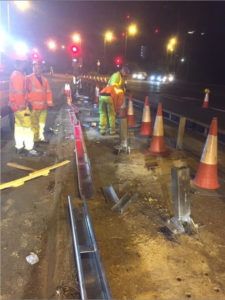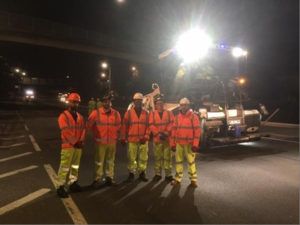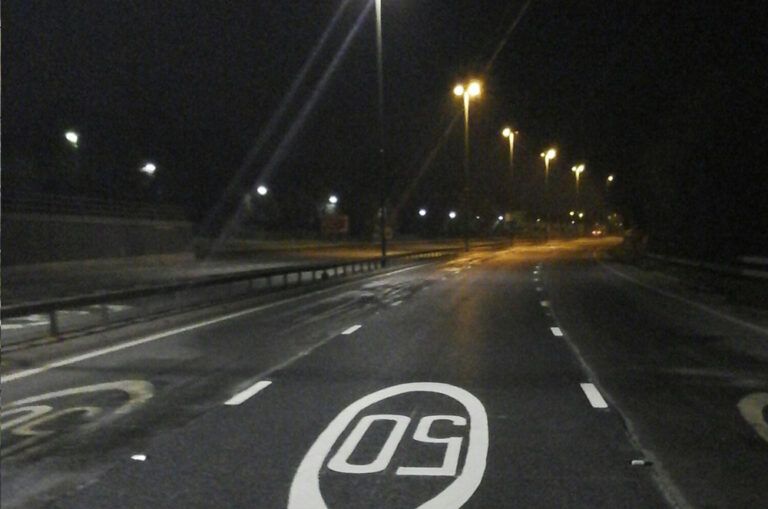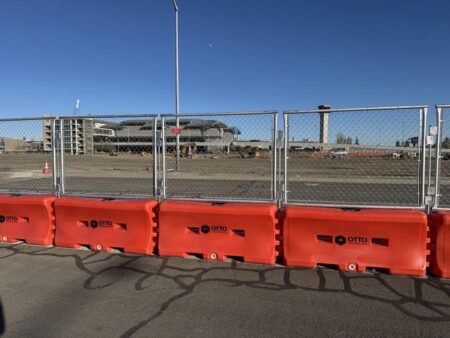Transport for London (TfL) has used a new approach to maintenance work on one of the UK capital’s major roads to tackle some of the knock-on issues caused by vital safety inspections and repairs, which need to take place every year.
TfL is responsible for managing London’s network of ‘red routes’, which are amongst the busiest roads in the capital. These primary routes make up 5% of London’s road space, but carry 30% of all traffic and TfL’s Network Management team work around the clock to keep people and goods moving on these roads. Using traditional methods of road closures, maintenance work on the A2 ‘red route’ between Blackwall Lane and Dartford Heath has taken up to 58 nights in previous years. In December 2018, Tfl and contractor Kier required a full overnight closure of the A2 to carry out an emergency pavement repair, which proved to be a great success.
 This year, TfL has worked closely with its contractors and the Royal Borough of Greenwich and London Borough of Bexley to put in place a faster and less disruptive program of maintenance work on the route, which is one of the city’s most important road arteries. By closing the road fully each night, TfL reduced the number of night closures needed to 20, which reduced the disruption caused by maintenance by two-thirds. The new methods also led to a significant increase in safety for crews working on the maintenance, with no recorded incidents taking place during the work. In contrast, during previous individual lane closure program, around 20 safety incidents took place, due to works happening in and around the general public.
This year, TfL has worked closely with its contractors and the Royal Borough of Greenwich and London Borough of Bexley to put in place a faster and less disruptive program of maintenance work on the route, which is one of the city’s most important road arteries. By closing the road fully each night, TfL reduced the number of night closures needed to 20, which reduced the disruption caused by maintenance by two-thirds. The new methods also led to a significant increase in safety for crews working on the maintenance, with no recorded incidents taking place during the work. In contrast, during previous individual lane closure program, around 20 safety incidents took place, due to works happening in and around the general public.
A huge variety of tasks need to be carried out every year to make sure that the road is safe and can continue to keep people and goods moving in south-east London. Tasks range from structural inspections to pothole repairs, hedge cutting and graffiti cleaning. Work carried out under the new program included:
- Repairs to 80 potholes along the road to keep the surface safe for road users;
- Replacement of 256 lighting units to ensure the road is well-lit at night;
- Resurfacing over 59,201 square feet (5,500 sq meters) of carriageway;
- Cutting 1.02m square feet (95,597 sq meters) of grass and graffiti cleaning at 10 locations to keep the area looking clean and tidy;
- Cleaning 1,027 signs to ensure they are clearly visible;
- Cleaning 1,340 gullies to reduce the risk of carriageway flooding;
- Replacement of 3,365 road studs to provide effective lane markings for road users during night and severe weather conditions;
- Carrying out repairs to the road’s vehicle restraint system, which can be lifesaving in the event of a collision on the road.
“Maintenance work such as this is absolutely essential to keeping the road network safe for everyone, but we’re always looking for ways to keep London moving and minimize the disruption it can cause,” said Glynn Barton, TfL’s director of network management. “This faster and safer way of working has saved many hours of potential delays for people in the area and we’ll be looking at where else in London we can replicate this success.”





